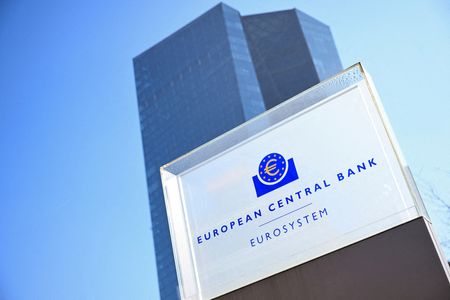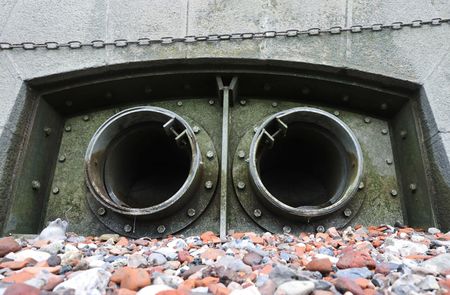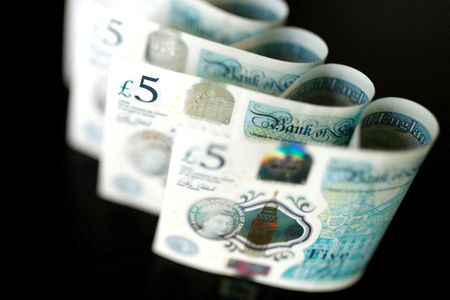By Yoruk Bahceli and Stefano Rebaudo
LONDON (Reuters) -The European Central Bank is set to pause for breath on Thursday after eight consecutive interest rate cuts, with the prospect of steeper-than-expected U.S. tariffs looming.
The threat tariffs pose to the euro zone is big but there’s still little certainty about them, so the question is what happens next.
“All the focus goes to September,” said Societe Generale senior European economist Anatoli Annenkov.
Here are five key questions for markets:
1/ What will the ECB do on Thursday?
Hold its main rate at 2%.
Data shows little to change the outlook since policymakers met in June, and there’s no clarity on what final U.S. tariffs will look like.
“The ECB will prefer to wait and see if anything actually pushes them out of the equilibrium they find themselves in,” said Salomon Fiedler, economist at Berenberg.
2/ How will the ECB react to the latest tariff threats?
Policymakers won’t want to look like they’re reacting to a threat.
New forecasts are not due this week but the ECB will have to reassess its scenarios, sources have told Reuters, as the 30% tariff level U.S. President Donald Trump has threatened is steeper than the 20% the ECB anticipated in its most negative scenario outlined in June.
“There is considerable uncertainty about the impact of tariffs on growth and inflation in Europe,” said Jefferies chief Europe economist Mohit Kumar. “I expect a wait-and-watch tone from (ECB chief Christine) Lagarde.”
3/ What happens after July?
It’s anyone’s guess what level of U.S. tariffs materialise, so traders have held onto expectations for one more rate cut.
Money markets price the move roughly as a coin toss between September and December.
Jefferies’ Kumar reckons an average 10-15% tariff rate wouldn’t require the ECB to cut more than once, but a 30% rate would reduce euro zone growth by around 0.5% next year and require an additional cut.
But AXA chief economist Gilles Moec said markets were too optimistic on trade and underestimating prospects for more ECB rate cuts.
“The baseline is that we actually end up with fairly chunky tariffs, probably not 30%, but still chunky tariffs and we’re going to face more deflationary pressure from China,” said Moec, expecting two cuts this year.
4/ Should the ECB worry about disinflation?
This is not a matter of if, but how much. Policymakers are already worried and cut rates in June to ensure inflation, which they see falling to 1.4% early next year, doesn’t stay below the 2% target in the medium term.
While the ECB expects it to rebound, that’s not a pretty sight with the memory of below-target inflation still recent in policymakers’ minds. Tariffs add to the risks.
The ECB already thought a 20% tariff with EU retaliation would keep inflation below 2% in 2027 rather than reaching target as the bank currently expects.
The prospect of China dumping discounted products on the EU could add to disinflation. But if EU countertariffs include services, the impact becomes more uncertain, Societe Generale’s Annenkov said.
And Germany’s massive fiscal stimulus is an upside risk to inflation.
Policymakers are split. Italy’s Fabio Panetta, a dove, has said the ECB should continue loosening policy if trade tensions strengthen disinflation. For hawk Isabel Schnabel, the bar for another cut is “very high”.
5/ What about further euro strength?
Policymakers are worried as a strong euro hurts growth and inflation. Vice President Luis de Guindos has identified $1.20 as pain point.
The euro surged nearly 17% from February to early July, hitting its highest since 2021 around $1.18.
It has since pulled back slightly, a relief as economists say it’s the speed of the appreciation that’s really worrying.
Yet analysts reckon it will reach $1.20 in a year, much higher than the $1.13 the ECB assumed for the next two years in June.
The euro is one reason why BNP Paribas expects a September rate cut, its head of developed markets Paul Hollingsworth said.
Morgan Stanley sees a rally to $1.25 by 2027 and expects this would lower inflation by 0.3 percentage points to 1.7%, preventing it from rising to target.
“We’re almost paying too much attention to the tariffs themselves than on FX,” said AXA’s Moec.
(Reporting by Yoruk Bahceli and Stefano Rebaudo; editing by Dhara Ranasinghe and Hugh Lawson)










